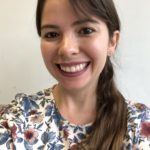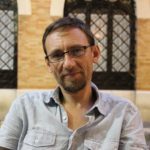Lien DOI – https://doi.org/10.1186/s12915-022-01456-3
BMC Biol 20, 269 (2022)
Background
Double-strand break repair (DSBR) is a highly regulated process involving dozens of proteins acting in a defined order to repair a DNA lesion that is fatal for any living cell. Model organisms such as Saccharomyces cerevisiae have been used to study the mechanisms underlying DSBR, including factors influencing its efficiency such as the presence of distinct combinations of microsatellites and endonucleases, mainly by bulk analysis of millions of cells undergoing repair of a broken chromosome. Here, we use a microfluidic device to demonstrate in yeast that DSBR may be studied at a single-cell level in a time-resolved manner, on a large number of independent lineages undergoing repair.
Results
We used engineered S. cerevisiae cells in which GFP is expressed following the successful repair of a DSB induced by Cas9 or Cpf1 endonucleases, and different genetic backgrounds were screened to detect key events leading to the DSBR efficiency. Per condition, the progenies of 80–150 individual cells were analyzed over 24 h. The observed DSBR dynamics, which revealed heterogeneity of individual cell fates and their contributions to global repair efficacy, was confronted with a coupled differential equation model to obtain repair process rates. Good agreement was found between the mathematical model and experimental results at different scales, and quantitative comparisons of the different experimental conditions with image analysis of cell shape enabled the identification of three types of DSB repair events previously not recognized: high-efficacy error-free, low-efficacy error-free, and low-efficacy error-prone repair.
Conclusions
Our analysis paves the way to a significant advance in understanding the complex molecular mechanism of DSB repair, with potential implications beyond yeast cell biology. This multiscale and multidisciplinary approach more generally allows unique insights into the relation between in vivo microscopic processes within each cell and their impact on the population dynamics, which were inaccessible by previous approaches using molecular genetics tools alone.



